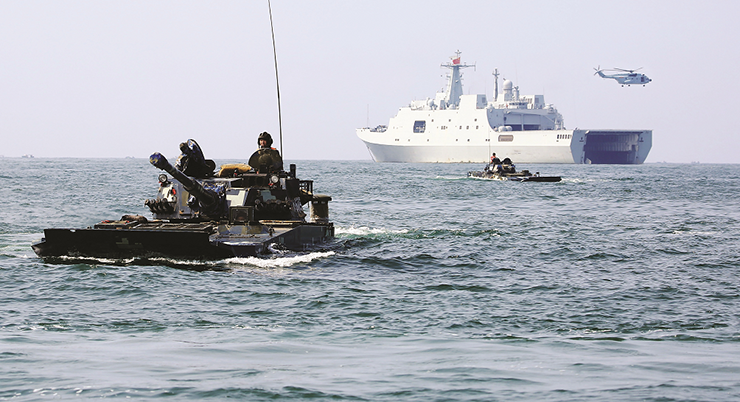
Washington: If US military planners’ worst-case scenario arose in the Pacific — having to defend Taiwan from a Chinese invasion — American military forces would target Chinese amphibious ships.
Without them, according to Mark Cancian, who ran a 2022 wargame for the Centre for Strategic and International Studies that examined this exact scenario, China couldn’t invade the neighbouring island. But to sink these amphibs, forces would have to destroy a protective ring of combatants with air defence and anti-submarine capabilities, as well as decoy ships and merchant vessels moving invasion forces and their gear.
US submarines would “rapidly fire everything they have” at the multitude of targets, Cancian said, ”using up torpedoes at a much, much higher rate than the US has expected to do in the past.” Navy jets, too, would join in — but they’d run out of Long Range Anti-Ship Missiles within days, forcing the aircraft to get ever closer to Chinese ships and planes so shorter-range missiles can reach their targets.
It’s this nightmare scenario that’s driving the Navy to increase its stockpile of key munitions: the LRASM, the MK 48 heavyweight torpedo, the Standard Missile weapons and the Maritime Strike Tomahawk, among others.
Indeed, the service has dramatically increased its weapons spending in the last two years. After slowly ticking up from $3 billion to $4 billion over seven years, Navy weapons spending jumped more than 70% from fiscal 2022 to fiscal 2024, when the service requested $6.9 billion.
There have been improvements: Torpedo vendors have moved from redesign into production. Lockheed Martin opened a new missile production facility in June 2022 with a fully robotic paint line and other automated processes to accelerate missile production and increase its output for the Navy and the Air Force. RTX (formerly Raytheon Technologies) expanded its internal test capacity, with new facilities near its Tucson, Arizona, production line and at the Redstone Arsenal test facility in Alabama.
But challenges remain. Navy officials and industry executives say they’re addressing specific bottlenecks in the supply chain, in some cases pursuing a second vendor or spending more government funds to modernize production facilities.
Rear Adm. Fred Pyle, the director of surface warfare on the chief of naval operations’ staff, said the Navy bought many of these weapons at a minimum sustaining rate for years but is now committed to maxing out production lines this year and into the future, which means addressing weak points in the supply chain.
“As we look at the global threat — what we see from China, what we see from Russia, and then the actions being taken in Ukraine — we saw the need to make sure that we get our munition stocks [and] inventories increased,” Pyle said.








